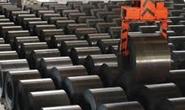Government/Policy

July 30, 2017
The Section 232 Yo-Yo from Mill and Trader Perspectives
Written by John Packard
Steel Market Update (SMU) spoke with steel trading companies and steel mills late last week in order to gauge the “mood” of the steel suppliers. We found a mostly composed group who are looking at business for the long term (although their customers may be more fickle depending on the news of the day).
A trader told us, “On the import side, HR is the strongest product, and there has been some yo-yoing on pricing. Some items and some regions are faring better than others – import pricing has been impacted by ‘mood’ associated with 232 perception.” He went on to say, “Some weeks the market believes 232 will be strong and they buy steel. Other weeks they perceive 232 weakness and then they sit on their hands and convince themselves the sky will fall… I wish ground rules were clearly established.”
SMU spoke with trading companies and found they were all being very cautious. We were told by more than one trader that their company was working closely with their regular customers and they continue to take new orders for foreign steel with the understanding that the two sides would work together should a 232 decision negatively impact that business.
One large trading company told SMU, “We have been trying to conduct our business with core customers and suppliers in a reasonable way. Section 232 doesn’t have much merit at the end of the day.”
Steel traders made a point of reminding us that business and prices in the rest of the world are rising. Prices in China and Europe are up. Some countries have voluntarily removed themselves from the market.
![]() A trading company executive pointed out that there could be some tightness in HVAC and furnace pipe galvanized products. “The pipeline could be drier than they [end users] think it is.” He continued with, “Demand is still very strong and we have seen August tons burnt up in July.”
A trading company executive pointed out that there could be some tightness in HVAC and furnace pipe galvanized products. “The pipeline could be drier than they [end users] think it is.” He continued with, “Demand is still very strong and we have seen August tons burnt up in July.”
We heard from steel mill executives who believe their order books are good and there is no need to panic. We heard from the head of commercial for one mill who told us slowing down the Section 232 decision will not hurt them. “Our book is solid and I don’t expect this to have much effect. A decision is still coming and the import pipeline is not going to magically recharge overnight. In my opinion, the more time it takes to get to a final decision, the better the result. This is a complex issue and it should take a lot of time to get it right with minimum collateral damage/unintended consequences.” He continued (tongue-in-cheek?) with, “I figure they are delaying until your conference…”
Another mill said, “[Any push-out of a 232 decision] changes nothing about what we will do or are going to continue to do. As to what (customers) think, well, they think something has changed. Not sure how Trump saying what we have already been observing over the past month is actually news.”
A third mill told us, “Not too concerned. Bookings are steady, we’re moving into September lead times. We believe prime scrap could be up by $20 in the August buy (minimills running well; auto stamping plant scrap generation down). Ongoing and prolonged uncertainty on what shape Section 232 may take is good for domestic producers; it hangs over the offshore sourcing markets like an ominous thunder cloud. New trading activity will continue to be muted. The very serious import coil percentage growth of 1H 2017 (except for HR) will likely dissipate across the back half of the year.”
During their earnings call with analysts, U.S. Steel CEO David Burritt said this of 232: “We continue to monitor the progress of the Section 232 investigation. We believe we have a compelling case of the harm that imports our having on America’s economic and national security. In order to have a strong U.S. manufacturing base, we must have a strong steel industry. So goes our manufacturing base, so goes our country. We firmly believe that this administration understands the importance U.S. steel to this country. This is in the government’s hand; they understand what’s at stake; they know what needs to be done. And we are confident this administration will come to the right conclusion. When the president announces his actions under Section 232, we are prepared to respond quickly. We will make our assessment of the potential impact of the Section 232 actions taken, and then make the adjustments to our operations necessary to continue to support our customers and respond to new opportunities. Enough said about 232, but make no mistake about this. This country has been in a trade war for decades and it needs to end now.”







